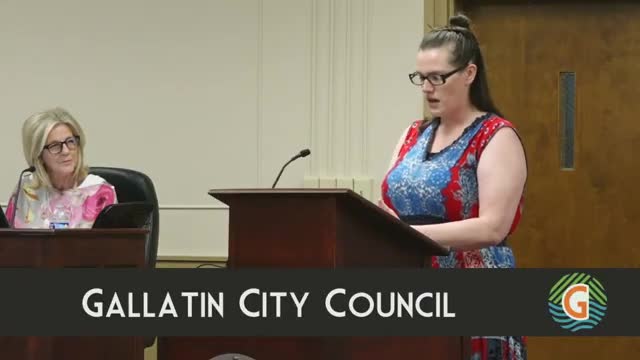Residents oppose Gallatin's rapid rezoning amid flooding and crime concerns
May 21, 2025 | Gallatin City , Sumner County, Tennessee
This article was created by AI summarizing key points discussed. AI makes mistakes, so for full details and context, please refer to the video of the full meeting. Please report any errors so we can fix them. Report an error »

In a recent Gallatin City Council meeting, residents voiced strong concerns over ongoing rezoning efforts and rapid development in the area. The discussions highlighted significant issues such as flooding, crime, and inadequate infrastructure, prompting calls for a slowdown in construction projects.
Martha Zanker, a local resident, expressed her frustration with the city's current trajectory, stating that the charm of Gallatin has been lost amid increasing noise, crime, and traffic. She emphasized the need for the council to reconsider its approach to development, arguing that the pace of construction is overwhelming the community and harming local wildlife. Zanker urged council members to vote against the proposed Kirkpatrick Gallatin Wheeler housing development plan, advocating for a pause to allow nature and the community to adapt.
Another resident echoed these sentiments, pointing out that the city is facing a housing surplus, with over 500 homes and 600 apartments currently available for sale or rent. This raises questions about the necessity of further rezoning for new housing developments. The speaker criticized the council for ignoring community feedback and suggested that the push for development seems to benefit a select few developers rather than the residents of Gallatin.
Concerns were also raised about the financial implications of supporting large corporations, such as Target, with taxpayer money for development projects. Residents questioned the rationale behind using public funds to subsidize private enterprises, arguing that such actions do not serve the best interests of the community.
The meeting underscored a growing tension between development and community preservation in Gallatin. As residents call for a more measured approach to growth, the council faces the challenge of balancing economic development with the needs and desires of its constituents. The outcome of these discussions could significantly shape the future of Gallatin, as the community grapples with the implications of rapid urbanization.
Martha Zanker, a local resident, expressed her frustration with the city's current trajectory, stating that the charm of Gallatin has been lost amid increasing noise, crime, and traffic. She emphasized the need for the council to reconsider its approach to development, arguing that the pace of construction is overwhelming the community and harming local wildlife. Zanker urged council members to vote against the proposed Kirkpatrick Gallatin Wheeler housing development plan, advocating for a pause to allow nature and the community to adapt.
Another resident echoed these sentiments, pointing out that the city is facing a housing surplus, with over 500 homes and 600 apartments currently available for sale or rent. This raises questions about the necessity of further rezoning for new housing developments. The speaker criticized the council for ignoring community feedback and suggested that the push for development seems to benefit a select few developers rather than the residents of Gallatin.
Concerns were also raised about the financial implications of supporting large corporations, such as Target, with taxpayer money for development projects. Residents questioned the rationale behind using public funds to subsidize private enterprises, arguing that such actions do not serve the best interests of the community.
The meeting underscored a growing tension between development and community preservation in Gallatin. As residents call for a more measured approach to growth, the council faces the challenge of balancing economic development with the needs and desires of its constituents. The outcome of these discussions could significantly shape the future of Gallatin, as the community grapples with the implications of rapid urbanization.
View full meeting
This article is based on a recent meeting—watch the full video and explore the complete transcript for deeper insights into the discussion.
View full meeting
